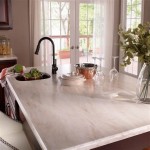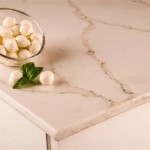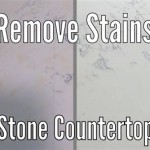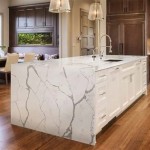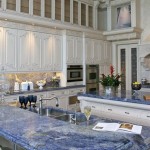Different Kinds of Quartz Countertops
Quartz countertops have become a ubiquitous choice for homeowners and designers seeking a durable, aesthetically pleasing, and relatively low-maintenance surface. This engineered stone material is composed primarily of ground quartz combined with resins, polymers, and pigments. The precise ratio of these components influences the countertop's color, pattern, and overall performance characteristics. Unlike natural stone, quartz countertops offer greater consistency in appearance and come in a vast array of designs. Understanding the different varieties of quartz countertops available is crucial for making an informed decision that aligns with specific design goals and functional requirements.
Color and Pigmentation Variations
One of the most significant differentiators among quartz countertops is the wide spectrum of colors and pigmentation available. The addition of pigments during the manufacturing process allows for a vast array of color options, ranging from pure whites and creams to deep blacks, vibrant blues, and earthy browns. This versatility makes quartz suitable for virtually any kitchen or bathroom design scheme.
Solid colors represent one end of the spectrum, offering a uniform and minimalist aesthetic. These are often preferred for contemporary or modern designs where clean lines and simplicity are paramount. Maintaining a consistent color throughout the entire slab is a hallmark of this type. Some examples include pure white quartz, often used in Scandinavian-inspired kitchens, and solid gray quartz, ideal for industrial or minimalist designs.
Alternatively, quartz can incorporate multicolored pigments to mimic the veining and patterns found in natural stone, particularly granite and marble. These countertops offer the visual appeal of natural stone but with the enhanced durability and consistency of quartz. The veining can range from subtle and delicate to bold and dramatic, allowing for diverse design aesthetics. The sophistication of the veining process has improved greatly, allowing for realistic replication of natural stone patterns.
Beyond solid and veined options, other color variations include speckled or textured quartz. These incorporate small flecks of different colors or materials, creating visual interest and adding depth to the countertop surface. This type of quartz can be particularly forgiving in terms of hiding minor spills or imperfections, making it a practical choice for busy households. Quartz with recycled glass embedded within is also available, adding a sustainable element to the selection.
Pattern and Veining Styles
The patterns and veining incorporated into quartz countertops are a major factor in their aesthetic appeal. These designs mimic the natural variations found in materials like marble and granite, providing a luxurious look without the inherent maintenance challenges of natural stone. Different manufacturing techniques result in distinctly different pattern styles.
One common style is marble-look quartz, which emulates the elegant veining of Carrara or Calacatta marble. These patterns typically feature flowing, organic lines in shades of gray or gold against a white or off-white background. The veining can be subtle and delicate or bold and dramatic, depending on the desired aesthetic. The advancements in digital printing and manufacturing have allowed quartz manufacturers to create extremely realistic marble patterns, making it difficult to distinguish between quartz and natural marble in some cases.
Granite-look quartz provides the mottled, granular appearance of natural granite. These patterns often incorporate a mix of colors and textures, creating a visually complex and dynamic surface. Granite-look quartz is a popular choice for those seeking a more rustic or traditional aesthetic. Unlike some marble-look quartzes, granite-look quartz tends to be more forgiving in terms of hiding spills and messes.
Another styling approach creates more abstract or geometric patterns. These designs often feature bold, modern lines and unconventional color combinations. Abstract quartz can serve as a focal point in a kitchen or bathroom, adding a unique and contemporary touch. This style is particularly well-suited for minimalist designs or spaces where a more modern aesthetic is desired.
The specific process used to create these patterns involves carefully blending and layering the quartz particles, resins, and pigments. Some manufacturers use advanced digital printing techniques to enhance the realism and complexity of the veining. The quality of the pattern replication directly impacts the overall aesthetic appeal and market value of the quartz countertop.
Surface Finishes and Textures
The surface finish and texture of a quartz countertop contribute significantly to its overall aesthetic and tactile feel. While polished finishes have historically been the most popular, other options like honed, matte, and textured finishes are gaining traction. Each finish offers a unique look and feel, impacting the countertop's light reflectivity, stain resistance, and overall design impact.
Polished quartz is the standard finish, offering a smooth, glossy surface that reflects light and enhances the countertop's color and pattern. This finish is relatively easy to clean and maintain, making it a practical choice for high-traffic areas like kitchens. The high gloss can, however, accentuate fingerprints and water spots, requiring more frequent cleaning. Polished quartz is often favored for its luxurious and contemporary appearance.
Honed quartz features a matte or satin finish that is less reflective than polished quartz. This finish provides a softer, more subtle look, which can be particularly appealing in spaces where a more understated aesthetic is desired. Honed quartz can be more susceptible to staining than polished quartz, as the slightly porous surface can absorb liquids more readily. Sealing is often recommended to mitigate this risk.
Textured quartz incorporates a tactile element into the countertop surface. This can be achieved through various techniques, such as embossing or sandblasting, creating a subtle or pronounced texture. Textured quartz adds visual interest and a unique sensory experience. However, the textured surface can be more difficult to clean than smooth finishes, as dirt and debris can accumulate in the crevices.
In addition to polished, honed, and textured finishes, some manufacturers offer specialized finishes that mimic the look and feel of natural stone, such as leathered or concrete finishes. These finishes can add a rustic or industrial touch to a space. The choice of finish should be carefully considered based on the desired aesthetic, maintenance requirements, and the overall design of the space.
Quartz Composition and Quality
The composition of a quartz countertop directly correlates to its durability, stain resistance, and overall performance. While all quartz countertops are composed primarily of quartz, the type and quality of the quartz, along with the type and quantity of resins used, affect the finished product. Differences in composition can influence the countertop’s price and suitability for specific applications.
High-quality quartz countertops will typically contain a higher percentage of natural quartz, often exceeding 90%. The use of high-quality quartz ensures greater durability, scratch resistance, and heat resistance. Less expensive quartz countertops may use a lower percentage of quartz, substituting it with fillers or other materials. This can compromise the countertop’s performance characteristics.
The type of resin used in the manufacturing process also impacts the countertop’s performance. High-quality resins provide superior stain resistance, UV resistance, and overall durability. Inferior resins can be more prone to staining, discoloration, and cracking. Reputable quartz manufacturers typically use proprietary resin formulations that have been specifically engineered for optimal performance.
The manufacturing process itself also plays a crucial role in the quality of the finished product. The way the quartz particles and resins are mixed, compacted, and cured affects the countertop’s density, strength, and consistency. Manufacturers that employ advanced manufacturing techniques are more likely to produce high-quality quartz countertops that meet stringent performance standards.
Certifications from organizations such as NSF International and GreenGuard can provide assurance that a quartz countertop meets certain performance and safety standards. These certifications indicate that the countertop has been tested and verified to be safe for food contact and low in volatile organic compounds (VOCs). Checking for these certifications can help consumers make informed purchasing decisions. The consistency of the quartz particle granulation and the homogeneity of the resin mixture within the slab itself are key indicators of higher quality manufacturing processes.

The Versatility Of White Quartz Countertops Rocktops

Kitchen Countertop Options Five Reasons To Choose Quartz Follow The Yellow Brick Home

Kitchen Countertop Options Quartz That Look Like Marble

From Quartz To Wood A Look At The Best Kitchen Countertop Materials Boss Design Center

The Msi Blog On Surface Inspiring Design Posts

Popular Quartz Countertop Edge Options For Your Kitchen

Quartz Countertop Pairings That Were Made For Each Other

Choosing Colour Quartz And Reason United Granite Countertops Pa

5 Popular Types Of Countertop Materials Hardman S

Quartz Countertops Q Premium Natural Msi
See Also

